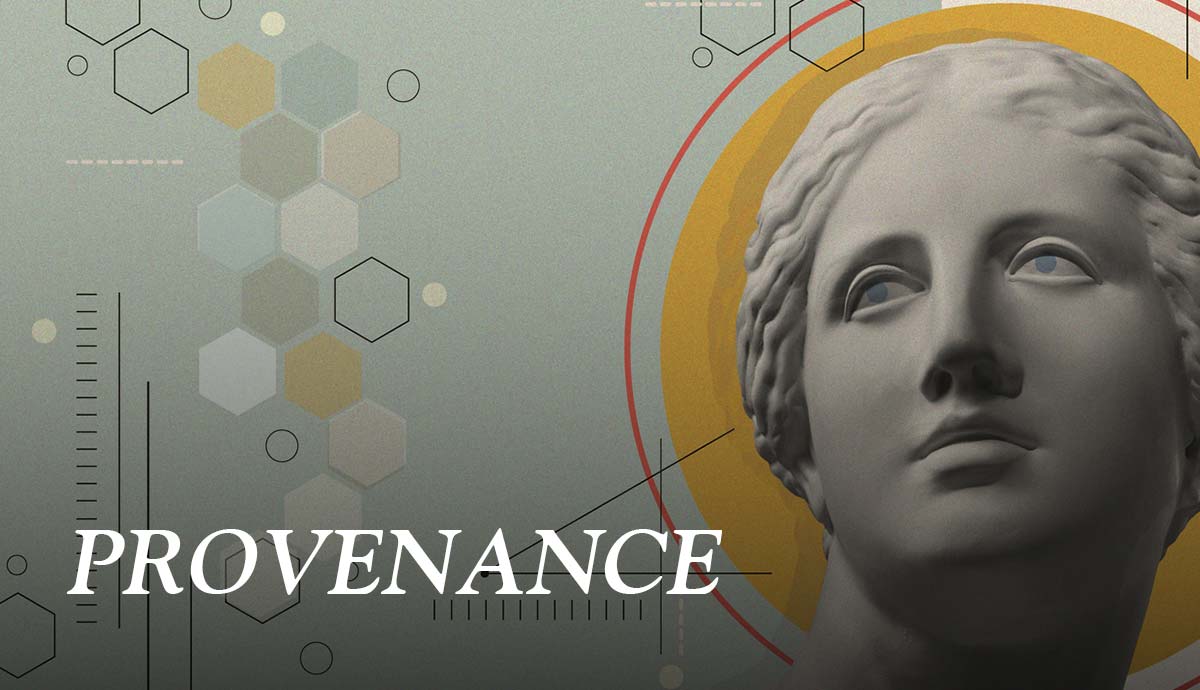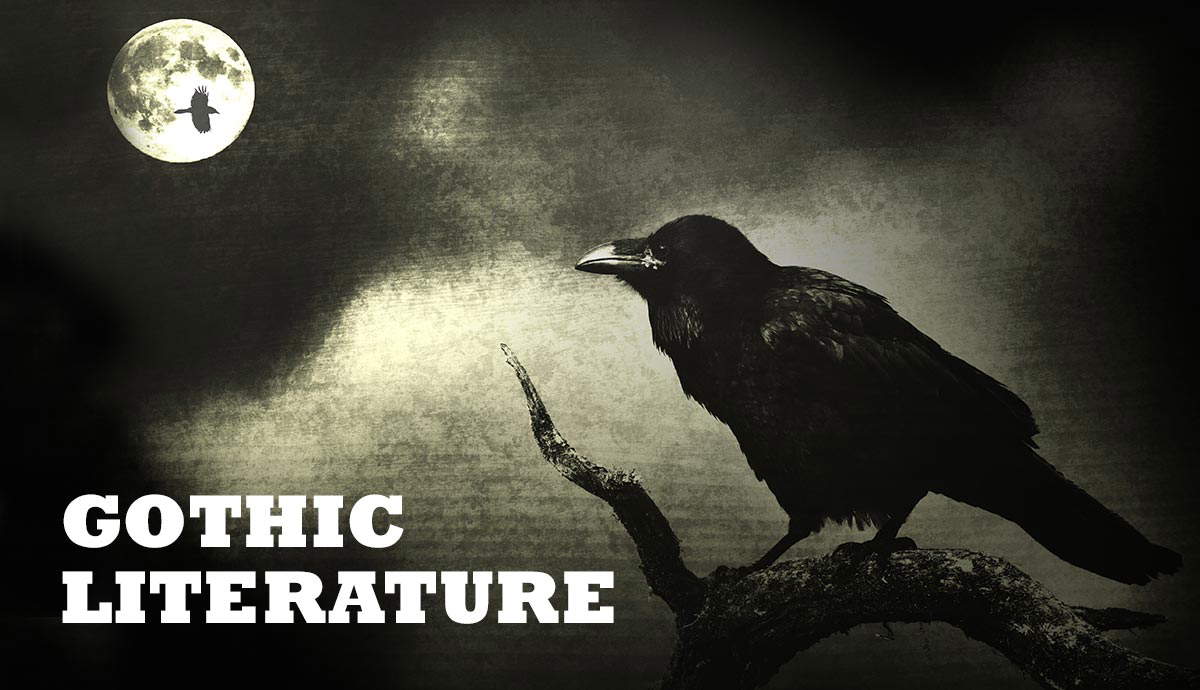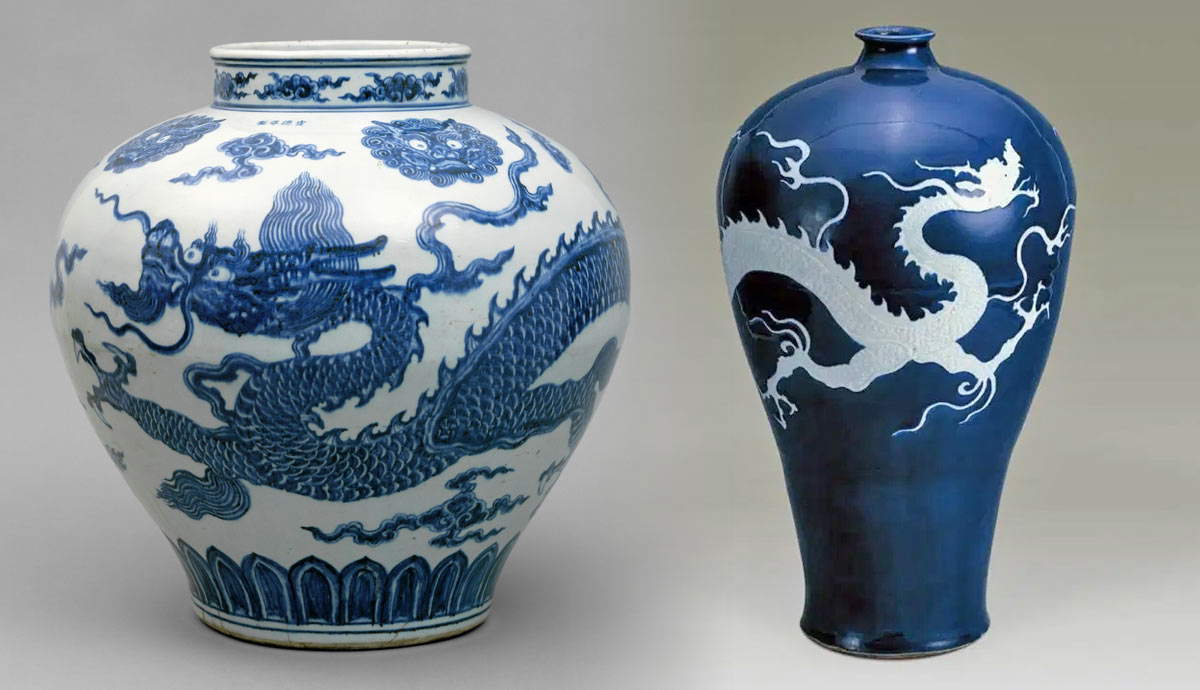
Provenance can be summarized as the documented history of an artwork’s ownership. In auction catalogs and even online auction lot descriptions, there’s always a brief description of an artwork’s prior ownership. This usually comes with various documents proving the past sales and purchases of the artwork in question. So, what is provenance used for, and why should you care about who owned a painting in the past?
Why Unraveling Provenance Matters

First, let’s define provenance. In the Concise Oxford Dictionary of Art Terms, provenance means “the listing of the previous ownership of a work of art, forming an essential part of its history.” A well-documented provenance provides indispensable background information on an artwork’s origin.
Knowing who owned an artwork throughout the ages makes it much easier to form conclusions about the artwork’s genuineness. Was it really painted by the claimed author, or is it done in their style? Is it perhaps a copy of a famous original? Or a forgery? What is its provenance saying about the way it came to belong to its current owner? There are many scenarios, and knowing an artwork’s documented origin will help decide which one is true in each specific case.

This is illustrated by a recent case when the seller of the pastel Éloge du Maquillage by Degas had assumed that his painting was a fake. After its sale at auction, the painting was found to be a genuine, long-lost Degas worth millions. This would have been less of a surprise if the seller had paid proper attention to the fact that it was acquired in 1940 by the avid local art collector Joan Llonch Salas, heightening the probability that it was original.
There are several good reasons to research art provenance before buying art, both for a private collector and for large organizations like museums, galleries, etc. Good provenance increases the value of a painting offered at auction, for example. This is an important consideration for people who are buying art as an investment. It also helps discover any illicit background history that may prevent or complicate the sale.
Determining if an Artwork Is Subject to Repatriation Claims

Common issues arising from undocumented provenance are art repatriation claims. As museums all over the world are trying to be more aware of unfairly acquired objects in their collections, cases of repatriation claims from previous colonies or underprivileged local groups are becoming more common. There are numerous art repatriation examples where museums returned artworks in their collections that have been stolen in the past, acquired under pressure, or simply taken from a country during times of crisis like war or internal upheaval.
It’s a very controversial subject, as many museums are reluctant to return artworks to countries that have no capacity for securely storing and researching the returned artworks. The Elgin Marbles from the Parthenon in Athens are a good example of such a claim, which raises numerous controversies. Lord Elgin had permission to remove the marbles that was given by the Ottoman government, and the British Museum acquired the marbles entirely legally. Still, there are ongoing debates about the moral right of ownership of these masterpieces.
Correct Attribution and Prevention of Art Theft

Another valid reason for finding out about an artwork’s provenance is to avoid buying a forged or stolen work of art. A questionable provenance has sometimes resulted in museums having to return artworks from their collections when their dishonest ownership was discovered. This happens when there’s proof that an artwork has been looted or stolen in the past, like in the case of the recent returns of the Egyptian coffin by the Boston Museum of Fine Arts or the return of the Cambodian sculptures by the Met.
A Case of Fake Provenance

Sometimes, in order to provide a convincing provenance, whole fictional collections have been made up of criminals. Such is the case of the Beltracchi forgeries. Often called the greatest art forger, Wolfgang Beltracchi created paintings in the style of Max Ernst, Kees van Dongen, André Derain, and other painters. He later had them sold as coming from the fictional Jaeger collection. To fabricate a convincing provenance, he also forged exhibition labels and photographs of the “collection” in a historical setting.
Another example of the use of a fictitious provenance is Giacomo Medici, who used a fake provenance, the Zbinden collection, to sell stolen artworks to Sotheby’s and the J. Paul Getty Museum in 1985. By selling the artworks to reputable auction houses, he added to the artworks’ fake provenance and could later sell them with a clean history.
What Good Provenance Includes

The dangers of unresearched or fake provenance include the possibility of financial losses, lawsuits, and even government repatriation claims. So, what makes for good art provenance? And what possibilities exist for researching an artwork’s origins?
While very few pre-20th-century artworks come with a complete set of documents, an ideal provenance would include the following:
- Artist information: This includes a clear signature on the painting, name, and brief biography.
- Previous owner history: Previous owners might include private collectors, museums, galleries, or public institutions.
- Sales records: Documentation proving an artwork’s sale/purchase is a vital part of truly satisfactory provenance. Documents proving a sale can include gallery or auction records, the date of sale, and invoices or other records of the price paid.
- Exhibitions, catalogs, or publications: If the artwork has been part of an exhibition, there would be catalogs, exhibition brochures, or other publications featuring it. It’s even better if there’s a photograph included in these.
- Conservation and restoration documentation: A pre-20th-century artwork has most likely had some restoration or conservation work done to it. Records of such work are a valuable part of the artwork’s history.
Art Provenance Research Methods You Can Use

There are two possibilities when researching an artwork’s provenance. You can carry out your own research on a particular painting, or you can contact an organization that specializes in this kind of research. If you want to find out more about an artwork, you can start by searching in online resources made accessible by libraries, online journals, and archives. The other option is contacting organizations and online databases that provide provenance information. While it sounds like the ideal way to leave the hard work to professionals, their research will depend on the type of information you can provide. In many cases, you’ll need to submit a photograph of the artwork.
Moreover, these databases are often more useful for researching particular information, such as whether the artwork in question was stolen or whether it is listed among art seized and confiscated from its owners during the Nazi regime, like Claude Monet’s The Parc Monceau. It often helps to first find out as much as you can about the artwork.
Libraries and Digital Archives

Online sources made available by libraries can be extremely useful for provenance research. Not all primary sources are digitalized and accessible online. However, an online search will often point out which books are available and where. One example of such an online source is the International Foundation for Art Research (IFAR). It offers a free, searchable list of catalogues raisonnés. This is one way to check whether a particular painting is included in the acknowledged body of work of a certain painter.
If you’re looking for documents related to a particular artist or artwork, try searching The Getty Research Institute’s Provenance Index Databases. Or in the case of American artists, the Smithsonian Institution’s Archives of American Art. These collections of digital records contain:
- Sales catalogs
- Inventories
- Art dealer stock books
- Financial documents
- Photographs
- Collectors’ files
- Provenance information on European art in major public collections
Stolen Art Databases

In the case of undocumented artworks whose history may hide theft, some online databases are specifically made to cover the information on stolen works of art. These organizations keep track of information about art theft in their databases, enabling a provenance researcher to discover the fact that it has been stolen. Organizations that provide this kind of database include:
- Interpol’s Stolen Works of Art Database
- FBI’s National Stolen Art File
- The Art Loss Register (ALR)
- Art Recovery International’s database, Art Claim
- Lost Art Database – specializing in the provenance research of Nazi-looted art
The use of advanced image recognition software allows exact identification of the submitted object based on photos provided by the client.
Provenance: Final Thoughts

Provenance gives meaning and background information to an artwork. While its artistic value remains the same whether its origin is known or not, the market value can increase or drop dramatically due to provenance issues. Because art provenance depends on records, it is often extremely difficult to reconstruct an artwork’s background if no documents are available.
If undertaking your own provenance research, it’s sometimes necessary to check for available provenance information in at least several of the resources mentioned above. Art provenance databases can help in uncovering vital information about an artwork’s background. Theft, illegal transfer, lawsuits and claims, and misattribution or forgery are only some of the things that can taint an artwork’s history. This, in turn, can have significant consequences for the market value of an art object, as well as for the possibility of donating it to a museum or loaning it for an exhibition. A full provenance record backed up by documentation can confirm the legitimate ownership of a work of art. It can also help identify stolen artwork or uncover a forged piece being presented as an original, making provenance research highly valuable to art historians and art market professionals alike.










